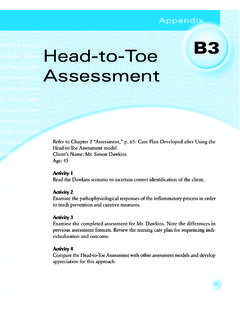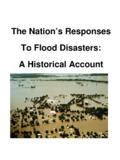Transcription of FORMATIVE ASSESSMENT - Masteryconnect
1 DEFINITIVE K-12 GUIDE TO FORMATIVEASSESSMENTW hether you re already a fan of FORMATIVE ASSESSMENT , or you re developing your FORMATIVE ASSESSMENT strategy for the first time, this guide will provide you with real-world insights and tips from actual educators to help you fuel student growth. What is FORMATIVE ASSESSMENT ? ..5 FORMATIVE ASSESSMENT vs . Summative ASSESSMENT ..10 The 3 Things that Make FORMATIVE ASSESSMENT Work ..15 FORMATIVE ASSESSMENT Ideas ..20 Conclusion .. so much emphasis on high-stakes testing and federal mandates like NCLB and ESSA, there has been much (and often heated) debate on the role of ASSESSMENT in our public schools. So it s no wonder that the word ASSESSMENT can carry some mighty heavy baggage for K-12 with FORMATIVE ASSESSMENT making a bold move to the forefront of educational trends, the term ASSESSMENT may be shaking part of its negative reputation.
2 In fact, K-12 innovators are finding that ASSESSMENT , when used frequently throughout the learning cycle, helps teachers improve student outcomes by giving them the insights they need for data-driven instruction, targeted interventions, and more meaningful teacher comprehensive guide gives you the ins and outs of FORMATIVE ASSESSMENT by providing an overview of FORMATIVE ASSESSMENT and its benefits for students and teachers breaking down the difference between FORMATIVE and summative ASSESSMENT presenting the three must-haves of good FORMATIVE ASSESSMENT offering ideas to start using in your own classroomGET FORMATIVEASSESSMENT THAT DRIVES process of FORMATIVE ASSESSMENT embeds checks for understanding into the learning cycle to provide feedback to teachers, allowing them to adjust instruction and provide personalized learning opportunities based on students unique needs.
3 FORMATIVE ASSESSMENT also provides critical feedback to students, so they can track their progress and take greater ownership of their learning. In short, FORMATIVE ASSESSMENT is ASSESSMENT for learning. Unlike summative tests, which typically occur at the end of a chapter or unit, FORMATIVE assessments are usually ungraded or don t carry heavily weighted points. Rather, FORMATIVE ASSESSMENT is a quick check for understanding to help teachers answer important questions about student growth: What do my students know? What do they still need to learn? How should I adapt my instruction?To help answer these questions, solutions are now available to help administrators and teachers track student progress while learning happens and overcome the once very time-intensive process of tracking the FORMATIVE student data.
4 With this in-the-moment data, teachers can more easily and effectively identify where students are right now and weigh that against where they need to be, then connect the data through adjusted instruction and ASSESSMENT is assessmentfor ISFORMATIVEASSESSMENT? OF FORMATIVE ASSESSMENTYou ve probably been using some type of FORMATIVE ASSESSMENT since you first stepped foot in a classroom you just may not have called it by that term. But with increasing emphasis to personalize the learning experience, educators are taking a more systematic approach to FORMATIVE ASSESSMENT at the classroom, school, and district ASSESSMENT tends to fall into two categories:Whether they re formal or informal, FORMATIVE assessments are embedded regularly into every step of the learning process, not just administered at the end of an instructional period.
5 And every FORMATIVE ASSESSMENT should do one important thing: inform teaching and ASSESSMENT should inform teaching and learning. FORMALFORMATIVE ASSESSMENTS Often documented and may or may not carry grade points. QuizzesPapersEntrance slipsPresentationsConcept mapsWritten surveysINFORMALFORMATIVE ASSESSMENTS Less documented and often more checks for understandingQuestioningDiscussionsObser vationsConfidence indications ( thumbs up / thumbs down ) ASSESSMENT VS. SUMMATIVE ASSESSMENTAt first glance, many think that it s a which-one-is-better debate when it comes to FORMATIVE and summative ASSESSMENT . Not so. They both have value and provide educators with critical information; they re used at different times for different purposes.
6 Like the term suggests, summative ASSESSMENT is used to gauge the culmination of student learning at the conclusion of a specific instructional period, be it the end of a chapter, a course, a project, or a school year. The key factor in defining summative ASSESSMENT is that it s used to evaluate learning, not to inform teaching and most cases, these types of assessments are spread out over a specific and predetermined time period, and (when used in the classroom) are included in the grading process. Furthermore, summative ASSESSMENT can be used to determine placement, as well as gauge the learning of groups for educational research and assessments do have their purpose, but there is one important thing they (often) don t do: They do not inform growth for students or teachers.
7 Because they are taken at quarter, semester, or year end, it s difficult to use the data they produce to adjust SUMMATIVE ASSESSMENTS tate-mandated testingYear-end testingFinal recitalUnit or chapter-end testsDistrict benchmarksInterim assessmentsFinal papersPortfoliosPlacement testsSummative ASSESSMENT is ASSESSMENT of there are seemingly endless ways to formatively assess your students, the strategy has to be thoughtfully designed to give you the data you need to determine the next steps in the learning are three can t-skips, gotta-dos, must-haves for meaningful FORMATIVE ASSESSMENT only works when you measure what you intend to measure. Correct alignment ensures continuity of instruction, instructional materials, and ASSESSMENT .
8 It also sends clear messages to students about what they know, what they need to know, and how to close that order to align your assessments to standards, you first have to be familiar with them which can be tricky for educators, especially those who teach elective ALIGNMENT1 THE 3 THINGSTHAT MAKE FORMATIVEASSESSMENT informational resources exist to help you dial in on the specific standards for your subject and grade level. Check with your district for standards materials, collaborate in your PLC, or download apps specifically designed for educators (like the Masteryconnect State Apps and Resource Pins.)Once you have an ASSESSMENT ready, review it for proper alignment to ensure that it will, in fact, inform both teaching and learning in your TO ASK ABOUT ASSESSMENT ALIGNMENT Which standards do you want to assess?
9 Does the ASSESSMENT directly align to these standards? Does it measure the concepts and skills associated with the standards? Is it grade-level and/or developmentally appropriate? Do the questions have the right level of readability? Does it include appropriate vocabulary for your students? Is it free of cultural bias? Will the question provide the insight you need to identify levels of understanding?Now, you may think that we are only covering alignment for formal FORMATIVE assessments, like multiple-choice or papers. Nope. As previously mentioned, the spectrum of FORMATIVE ASSESSMENT is wide, including both formal and informal ASSESSMENT and is effective for all subjects and grade an educator, you may use your own observations of student performance.
10 This works well for activities like musical numbers, art pieces, or group discussions. Or a FORMATIVE ASSESSMENT could be as simple as students self-reporting their confidence in understanding the day s of how you choose to assess your students (and how you gather data about that ASSESSMENT ), proper alignment is the first step in making sure that FORMATIVE ASSESSMENT is working in your have repeatedly shown that the sooner a student receives feedback, the more likely it is to have a positive impact on learning. Summative assessments, typically administered at the end of an instructional period, often don t communicate to students about their progress until days, weeks, or even months down the s why FORMATIVE ASSESSMENT is so important.






